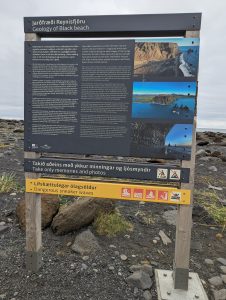Fabulous Iceland Adventure Part 1
Without actually planning it, this has apparently been my year to travel. Well, I definitely planned the trip to Australia because it's on the other side of the planet and the flight is 15 hours(!) long. I'd heard good things about Iceland, but it wasn't until my travel companion Nancy and her husband Harl said “let's go!” that I said “yes.” This post has lots of photos from my fabulous Iceland adventure Part 1. (Click the photos to see bigger versions.)
{{ See also Fabulous Iceland Adventure Part 2 }}
We drove counter-clockwise around the country in a rented SUV that had seen better days (the seat springs had definitely seen better days). However, it ran well and got good gas mileage. If you're thinking of doing something similar, check gas prices (you'll have to convert from liters to gallons and from Icelandic króna to US dollars), or you'll be in for serious sticker shock.
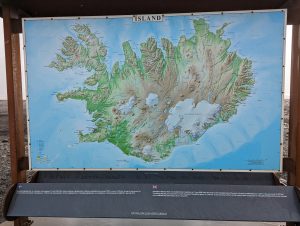
Waterfalls Are Fabulous… and Everywhere
Iceland is a geothermal hotspot that joins two tectonic plates. It's also close to the Arctic Circle, so the nickname, “the land of fire and ice,” is well chosen. Two glaciers provide constant runoff in the summer. Since it's a volcanic island, the water has to go somewhere, so off into the ocean it goes.
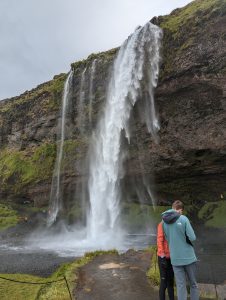
~ ~ ~
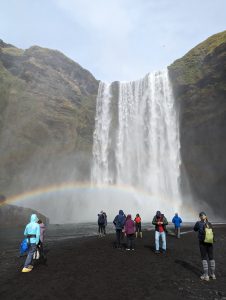
~ ~ ~
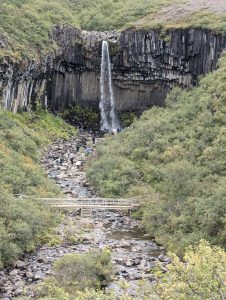
Tectonic Plates Meet
Thingvellir National Park features a rift valley where two tectonic plates meet. They sometimes rub each other the wrong way, resulting in a multitude of earthquakes and occasional volcanic eruptions.
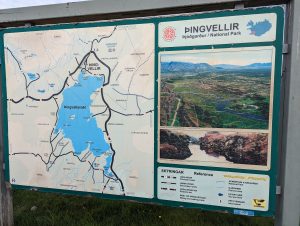
It's also a historic site where Iceland's parliament met for about 800 years. Iceland was one of the last islands (New Zealand is another) settled by humans. Norse people arrived in the year 874. For their first parliament about 50 years later, they chose a spot that was accessible from anywhere on the island. The Iceland Tourism site has a lot more information. Iceland has a somewhat dark past with in-fighting, harsh colonial rule by the Danes, and natural disasters. Icelanders view this location as the one place where they came together for themselves.
What's In a Name?
The Icelandic language is a relic. It's like a time capsule of Norwegian as it was in the 10th century. This likely explains why Icelandic has six extra letters in their alphabet (á, æ, Þ, ð, é, and ó). I knew some of this because a lead character in Overload Flux, one of my space opera books speaks Icelandic as his native language. Icelandic is a notoriously difficult language to learn for even simple conversation, so I stuck with asking Icelanders how to read and pronounce their place names. In addition to the extra letters having their own default pronunciations, double consonants are pronounced differently than the single versions. That's why Icelanders were vastly amused when news announcers the world over tried to pronounce “Eyjafjallajökull,” the name of the volcano that stopped air traffic for weeks in 2010.
